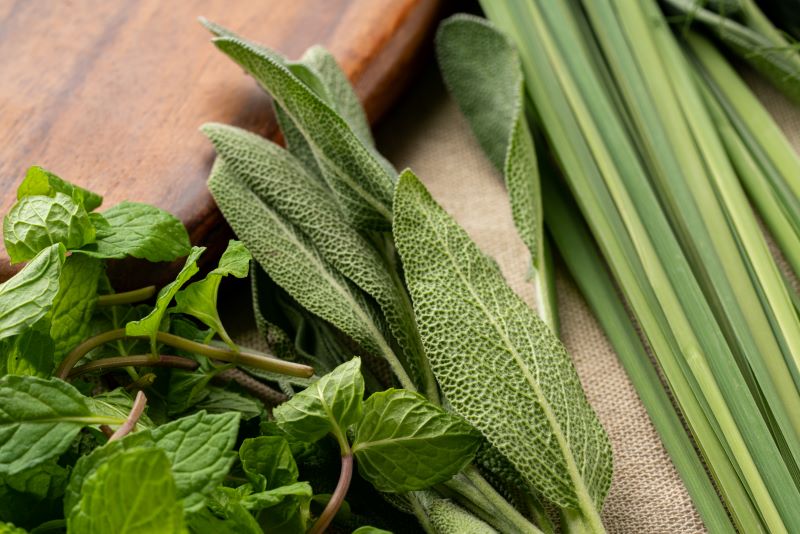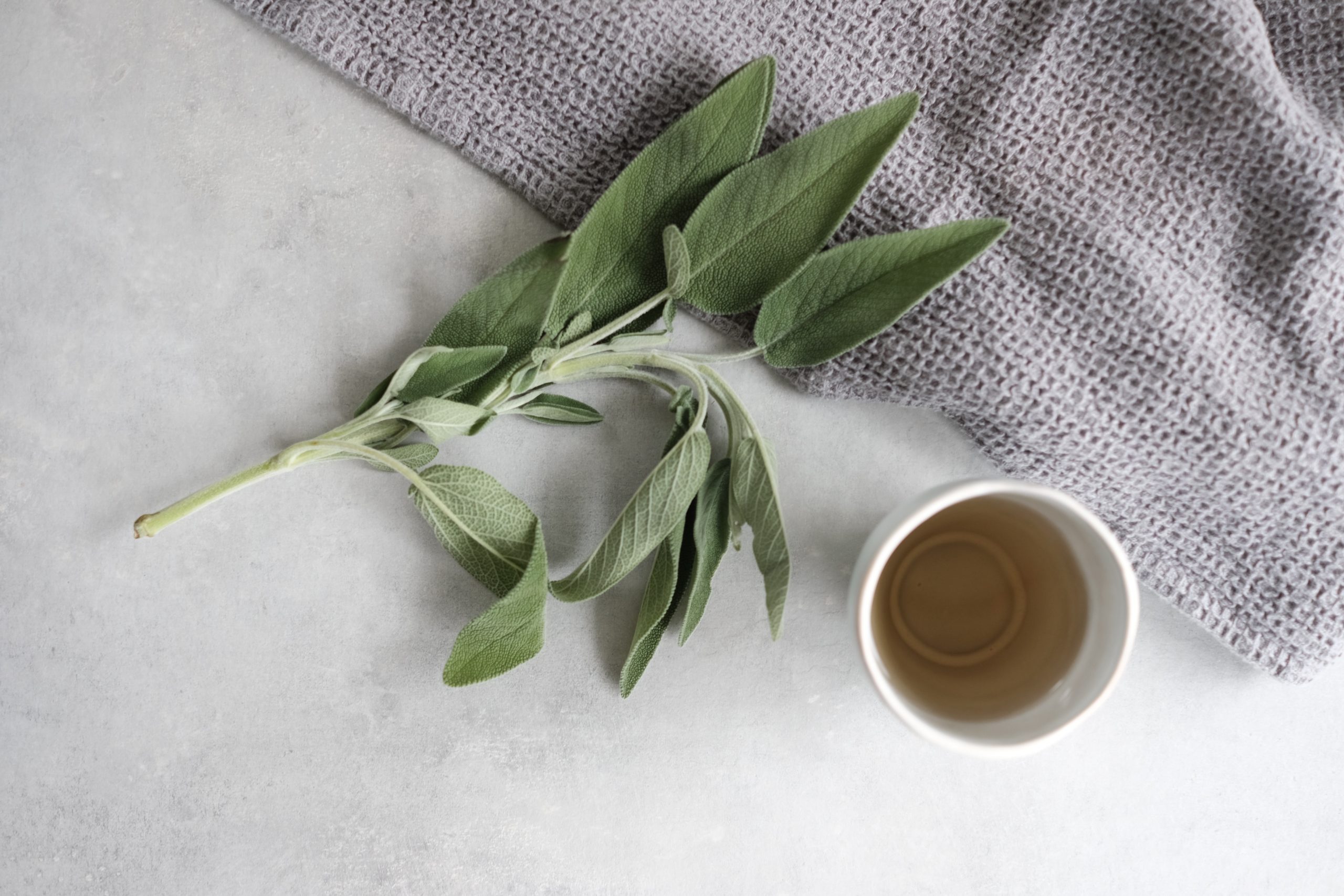Sage makes wonderful tea! Most people know Salvia officinalis as a highly aromatic culinary spice, especially good to preserve and help digest meats. But don’t relegate it to the spice cabinet! Sage has potent antibacterial and antiviral properties, and is anti-inflammatory, antispasmodic, astringent, decongestant, carminative, and a good nervine.
Historical View
Bitter and pungent in flavor, sage has been utilized to ensure a long life. An ancient Latin proverb, dating to at least the early Middle Ages, goes: Cur moriatur homo cui Salvia crescit in horto? (Why should a man die when sage flourishes in his garden?)
It was traditional in England to eat sage in May to ensure good health throughout the year: He who would live for aye, Must eat sage in May. Fresh sage and parsley were chopped, mixed with butter and salt, and spread on daily sandwiches or cooked with potatoes.
Medicinal Uses
Sage’s aromatic oils can stimulate the pituitary gland, the adrenals, the reproductive hormones, and the body’s immune system. It helps dry excess mucus in the respiratory tract, reduces sweating, and can prevent lactation. Sage can be used in moderation for irregularity of the menstrual cycle, and is particularly valuable in cases of heavy cycles.
Warming and drying by nature, sage in the form of a tea or topical poultice is ideal for treating rheumatic pains caused by cold, damp weather. Sage also promotes circulation and has a strong reputation for helping memory. Carry a leaf of sage in your pockets to promote wisdom and also to protect you from the plagues!
Use sage topically as a fomentation, poultice, wash, or foot bath. It is a reliable disinfectant to help treat staph infections, athlete’s foot, cuts, abrasions, and wounds. Washing the face with sage tea is highly effective for treating acne and oily skin. In fact, it was a primary ingredient in the “Queen of Hungary Water” from the 1300’s, the world’s first known distillable perfume and cure-all beauty tonic, with rosemary, chamomile and rose in apple cider vinegar.
Contraindications are few. Except for culinary use, avoid sage during pregnancy and lactation due to the high ketone content, but use it to help conception or a baby to “stick” to a slippery and cold uterus. Large doses can cause dryness of the mouth and mucous membranes. Individuals prone to seizures should avoid sage essential oil.
Sage Teas
The most pleasant way to take sage to help your memory or fight a virus is to drink a cup of sage tea daily. Use a sprig of fresh sage or a rounded teaspoon of dried leaves per cup of boiling water, cover and allow to brew for up to a minute. This method will elicit a slightly diaphoretic effect, causing sweating. Consume the tea cold or at room temperature as an astringent and antihidrotic (perspiration inhibitor). This method can help treat night sweats, hot flashes and excessive sweating, and can aid in drying mucous membrane secretions.
Sage tea with lemon and honey is particularly good for drying out phlegmy, wet coughs. Gargle warm sage tea for sore throats, or add a little sea salt or apple cider vinegar. Regular consumption of sage, either as a tea or mouth rinse, can relieve gum diseases and mouth infections.
Integrate sage into your tea drinking with two of our teas. Our Silurian Sage is a black tea blend that contrasts the earth notes of sage with bright peppermint, resulting in a savory and stimulating sensation in the mouth. And our single botanical sage features this powerful herb by itself, which you can steep following the guidelines in this article!
Read new quarterly herbalism content by Greta de la Montagne on our blog page.
Written by: Greta de la Montagne Edited by: Samantha Lepore & Heather Kreilick




